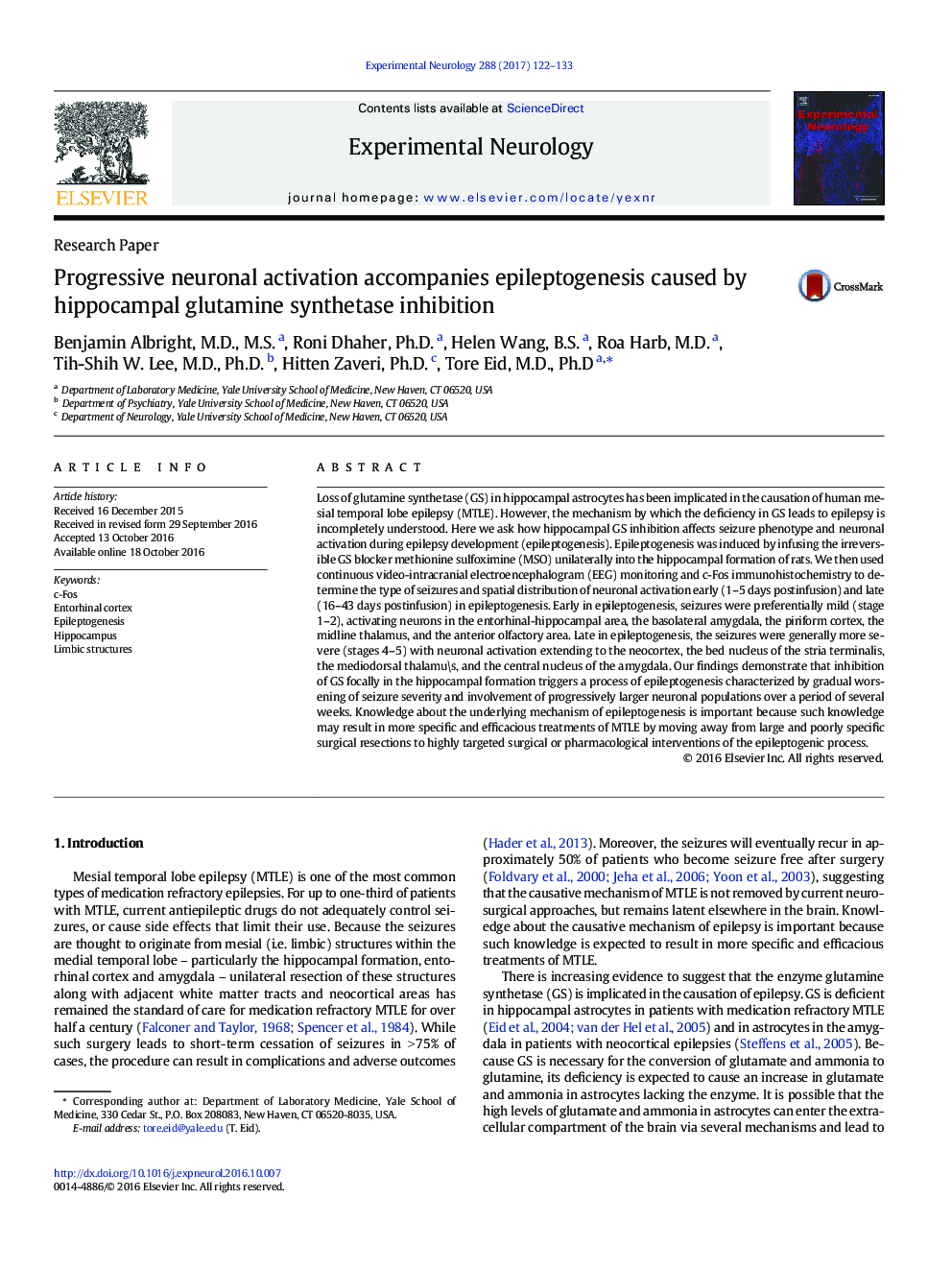| کد مقاله | کد نشریه | سال انتشار | مقاله انگلیسی | نسخه تمام متن |
|---|---|---|---|---|
| 5629201 | 1580151 | 2017 | 12 صفحه PDF | دانلود رایگان |
- Inhibition of glutamine synthetase in the hippocampal formation leads to epilepsy.
- The epileptic seizures involve a small number of brain areas initially.
- The seizures are mostly low grade (not severe) during the early phase.
- The seizures progressively worsen over the next several weeks.
- The worsening is accompanied by seizure involvement of multiple brain areas.
Loss of glutamine synthetase (GS) in hippocampal astrocytes has been implicated in the causation of human mesial temporal lobe epilepsy (MTLE). However, the mechanism by which the deficiency in GS leads to epilepsy is incompletely understood. Here we ask how hippocampal GS inhibition affects seizure phenotype and neuronal activation during epilepsy development (epileptogenesis). Epileptogenesis was induced by infusing the irreversible GS blocker methionine sulfoximine (MSO) unilaterally into the hippocampal formation of rats. We then used continuous video-intracranial electroencephalogram (EEG) monitoring and c-Fos immunohistochemistry to determine the type of seizures and spatial distribution of neuronal activation early (1-5Â days postinfusion) and late (16-43Â days postinfusion) in epileptogenesis. Early in epileptogenesis, seizures were preferentially mild (stage 1-2), activating neurons in the entorhinal-hippocampal area, the basolateral amygdala, the piriform cortex, the midline thalamus, and the anterior olfactory area. Late in epileptogenesis, the seizures were generally more severe (stages 4-5) with neuronal activation extending to the neocortex, the bed nucleus of the stria terminalis, the mediodorsal thalamu\s, and the central nucleus of the amygdala. Our findings demonstrate that inhibition of GS focally in the hippocampal formation triggers a process of epileptogenesis characterized by gradual worsening of seizure severity and involvement of progressively larger neuronal populations over a period of several weeks. Knowledge about the underlying mechanism of epileptogenesis is important because such knowledge may result in more specific and efficacious treatments of MTLE by moving away from large and poorly specific surgical resections to highly targeted surgical or pharmacological interventions of the epileptogenic process.
Journal: Experimental Neurology - Volume 288, February 2017, Pages 122-133
